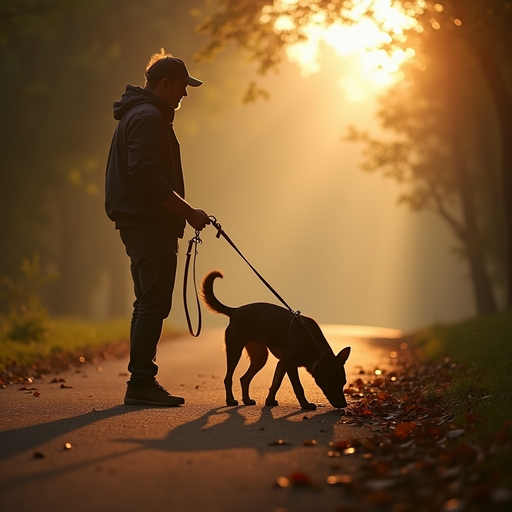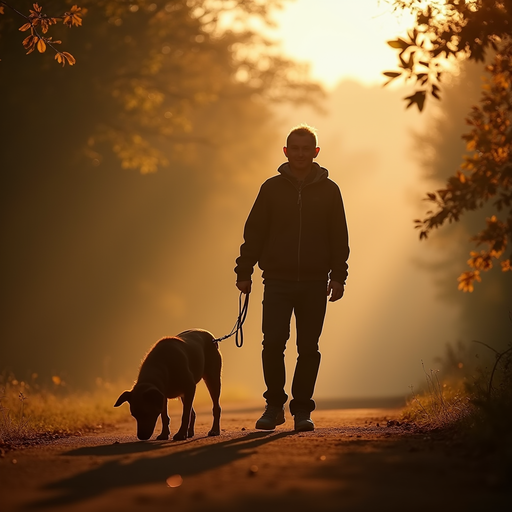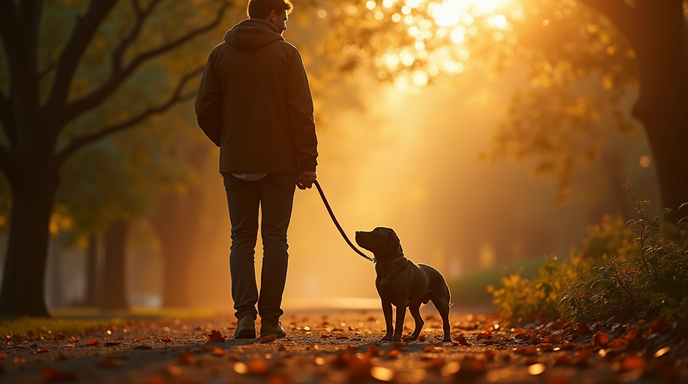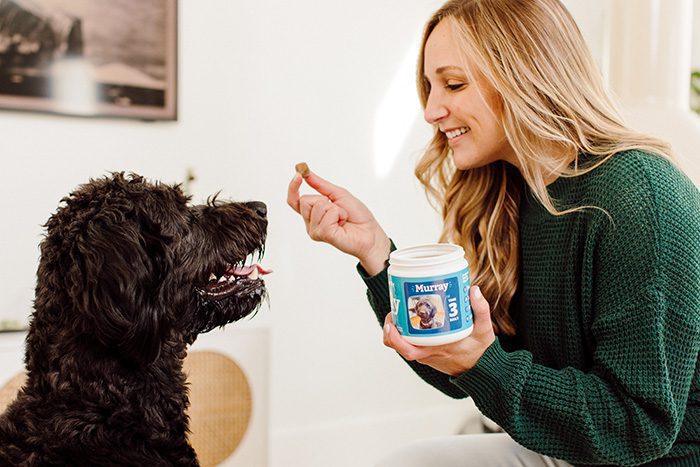Does your daily dog walk sometimes feel more like a struggle than a pleasure? You’re certainly not alone. While walks should be the pinnacle of your dog’s day, unnoticed habits can turn this cherished time into a source of anxiety for our furry friends.
Our dogs may not be able to voice their worries, but they are always sending us signals that we often overlook or misinterpret.
That moment of hesitation before stepping outside, the abrupt stops, or the constant pulling—these are not random actions; they are your dog’s clever way of expressing that something feels off.
To truly appreciate the complexity of dog walks, we must understand that they are much more than mere physical activity.
For dogs, walks are a multisensory journey, a social outing, and a vital chance for mental stimulation.
By adopting this broader viewpoint, we can transform walks from a mundane chore into a captivating adventure for both you and your dog, enhancing the bond you share and making every outing a joyful experience.
Understanding Your Dog’s Perspective
Before diving into specific mistakes and solutions, it’s crucial to understand how dogs perceive and experience walks. Unlike humans, who might view walks primarily as exercise or a necessary task, dogs engage with walks on multiple levels:
Sensory Experience
Dogs process the world primarily through their sense of smell, followed by their acute hearing and vision. During walks, they’re not just moving through space – they’re reading a complex narrative of their environment through these sensory inputs.
Every bush, lamppost, and patch of grass tells a story about who’s been there, what’s happened recently, and what might be approaching.
Social Interaction
Walks provide essential opportunities for social learning and interaction. Through encounters with other dogs, people, and various environmental stimuli, dogs learn about their world and their place in it. These experiences shape their social confidence and behavioral responses.
Mental Stimulation
A walk isn’t just physical exercise – it’s an intensive mental workout. Dogs process countless pieces of information during walks, from environmental changes to social cues. This mental engagement is often more tiring than the physical aspects of the walk.
Physical Exercise
While the physical benefits are important, they’re just one component of what makes walks valuable. The type and amount of exercise needed varies significantly based on breed, age, health status, and individual temperament.

Common Mistakes and Their Solutions
Rushing Through
The Science of Sniffing
The canine olfactory system is a marvel of evolutionary design. With up to 300 million olfactory receptors compared to our mere 6 million, dogs experience the world primarily through their nose.
This extraordinary difference means that sniffing isn’t just a casual activity – it’s their primary way of gathering and processing information about their environment.
Recent studies in canine cognition have shown that just 20 seconds of focused sniffing can provide mental stimulation equivalent to a 20-minute physical walk.
This finding revolutionizes how we should approach walk time management and highlights the crucial role of olfactory enrichment in canine mental health.
Creating Enriching Sniffing Opportunities
To maximize the benefits of sniffing time, consider implementing these strategies:
Designated Sniff Zones
- Create specific locations along your route where your dog knows they can take their time exploring
- Vary these zones regularly to provide new scent experiences
- Consider areas with high scent variety, such as natural borders or community gathering spots
Time Management
- Start walks 15-20 minutes earlier than necessary to accommodate proper sniffing time
- Plan routes with natural pause points
- Use different routes for different purposes (quick relief walks vs. exploratory walks)
Environmental Enrichment
- Introduce new scent experiences through varied routes
- Create a “sniffing map” of your neighborhood highlighting high-interest areas
- Consider seasonal changes in scent landscapes
Using Inappropriate or Poorly Fitted Equipment
The Impact of Equipment Choice
The right walking equipment serves multiple purposes: it ensures safety, provides comfort, enables communication, and supports positive behavior. Poor equipment choices can lead to physical discomfort, psychological stress, and behavioral issues that manifest during walks.
Comprehensive Equipment Evaluation
Harness Considerations
- Proper fit around chest and shoulders
- Freedom of movement in leg areas
- Appropriate pressure distribution
- Material suitability for climate
- Adjustment points for customization
- Visibility features for safety
Collar Selection
- Appropriate width for neck size and breed
- The proper material for skin sensitivity
- The correct size for the head shape
- ID tag accommodation
- Emergency release features when needed
Leash Options
- Length appropriate for training goals
- Material suitable for handling comfort
- Strength matching dog size and power
- Visibility features for night walking
- Backup systems for additional security
Regular Equipment Maintenance Protocol
Implement a systematic approach to equipment maintenance:
- Weekly visual inspections of all gear
- Monthly thorough cleaning and sanitization
- Seasonal adjustments for coat changes
- Quarterly hardware checks (clips, rings, buckles)
- Immediate replacement of worn or damaged items
Ignoring Environmental Stress Triggers
Understanding Environmental Impact
Dogs process environmental stimuli differently than humans do. Their heightened senses mean that what appears mundane to us might be overwhelming for them. Understanding and managing environmental stressors is crucial for successful walks.
Comprehensive Stress Trigger Analysis
Physical Environment
- Surface textures and changes
- Temperature variations
- Weather conditions
- Lighting changes
- Physical obstacles
Sound Environment
- Traffic noise
- Construction work
- Emergency vehicles
- Weather-related sounds
- Community activities
Visual Triggers
- Moving objects
- Shadows and reflections
- Sudden movements
- Unfamiliar objects
- Changes in familiar environments
Building Environmental Confidence
Develop a systematic approach to managing environmental challenges:
Distance Management
- Identify optimal distances from known triggers
- Create buffer zones around stressful areas
- Plan alternative routes for high-stress days
Desensitization Techniques
- Gradual exposure to common triggers
- Positive association building
- Confidence-building exercises
- Recovery time management
- Progress tracking and adjustment

Inconsistent Walking Patterns
The Science of Routine
Dogs thrive on predictability, which helps reduce anxiety and build confidence. Their internal clocks are remarkably precise, and they can develop strong associations between specific times of day and activities.
Understanding this biological programming helps us create more effective walking routines.
Creating Effective Walking Schedules
Time-Based Routines
- Establish consistent daily walking times
- Account for seasonal variations
- Plan for weekday vs. weekend differences
- Include buffer time for transitions
- Maintain feeding schedule coordination
Route Planning
- Develop multiple route options
- Consider weather alternatives
- Include variety within structure
- Plan for different walk purposes
- Create emergency backup routes
Activity Integration
- Combine training with walking
- Include social opportunities
- Plan for exercise intensity
- Allow for exploration time
- Consider enrichment activities
Forcing Social Interactions
Understanding Canine Social Needs
Every dog has unique social preferences that can vary based on numerous factors including age, experience, temperament, and current physical and emotional state.
Respecting these individual differences is crucial for building trust and maintaining walking enjoyment.
Managing Social Encounters
Reading Body Language
Understand and respect these key signals:
- Stress indicators (lip licking, yawning)
- Avoidance behaviors
- Engagement signals
- Distance-creating behaviors
- Arousal levels
Social Space Management
- Create appropriate distance buffers
- Use environmental features as barriers
- Practice planned retreats
- Maintain awareness of approach angles
- Monitor recovery needs
New Essential Components for Successful Walks
Weather and Seasonal Adaptations
Season-Specific Considerations
Summer Walking
- Heat management strategies
- Hydration planning
- Surface temperature monitoring
- Time-of-day adjustments
- Recovery protocols
Winter Preparations
- Cold weather protection
- Ice and snow management
- Visibility solutions
- Emergency Preparedness
- Equipment modifications
Health and Safety Protocols
Pre-Walk Assessment
- Physical condition check
- Equipment inspection
- Weather evaluation
- Route planning
- Time management
During-Walk Monitoring
- Stress level assessment
- Physical exertion tracking
- Hydration management
- Environmental awareness
- Behavioral observation
Training Integration
Walk-Based Training Opportunities
- Loose leash walking practice
- Basic command reinforcement
- Environmental confidence building
- Social skills development
- Impulse control exercises

Implementation Strategy
Creating Your Walking Plan
Assessment Phase
- Evaluate current walking patterns
- Identify primary challenges
- Set realistic improvement goals
- Create baseline measurements
- Establish progress-tracking methods
Implementation Timeline
- Week 1-2: Equipment optimization
- Week 3-4: Route planning and timing adjustments
- Week 5-6: Training integration
- Week 7-8: Social interaction management
- Week 9-10: Advanced skill development
Managing Weather and Seasonal Challenges
Different seasons bring unique challenges to dog walking. Understanding and preparing for these can make walks more comfortable year-round.
Seasonal Considerations
- Summer: Heat management, paw protection, hydration
- Winter: Cold protection, ice safety, reduced daylight
- Spring: Mud management, seasonal allergies
- Fall: Leaf cleanup, earlier darkness
Building a Progressive Walking Program
Like any physical activity, walking benefits from a structured approach that builds endurance and confidence over time.
Program Components
- Distance progression
- Duration management
- Intensity variation
- Rest and recovery
- Skill development
Incorporating Training During Walks
Walking time can be efficiently used for training and mental stimulation.
Training Opportunities
- Basic obedience reinforcement
- Loose leash walking practice
- Environmental awareness exercises
- Recall training in safe areas
- Impulse control work
Moving Forward: Implementation Strategy
Success in improving your walking experience comes from the systematic implementation of changes. Consider this approach:
- Assess your current walking routine
- Identify primary areas for improvement
- Create a realistic implementation timeline
- Track progress and adjust as needed
- Celebrate small victories
Remember that transformation takes time. Focus on one aspect at a time, allowing both you and your dog to adjust comfortably to each change. The goal isn’t perfection but rather a steady improvement in your walking experience together.
Conclusion
Transforming your daily dog walks from a source of stress to a mutually enjoyable experience requires understanding, patience, and consistent application of best practices.
Remember that every dog is unique, and what works for one may need adjustment for another. The key is to remain observant, responsive, and flexible in your approach.
Success in improving your walking experience isn’t measured by achieving perfect walks but by creating an environment where both you and your dog can learn, grow, and enjoy your time together.
Start with small changes, maintain consistency, and celebrate the progress you make along the way.
By implementing the strategies outlined in this guide, you can create a walking routine that not only meets your dog’s physical exercise needs but also provides mental stimulation, builds confidence, and strengthens your bond.
Remember, every walk is an opportunity for positive interaction and shared adventure – make each one count.



